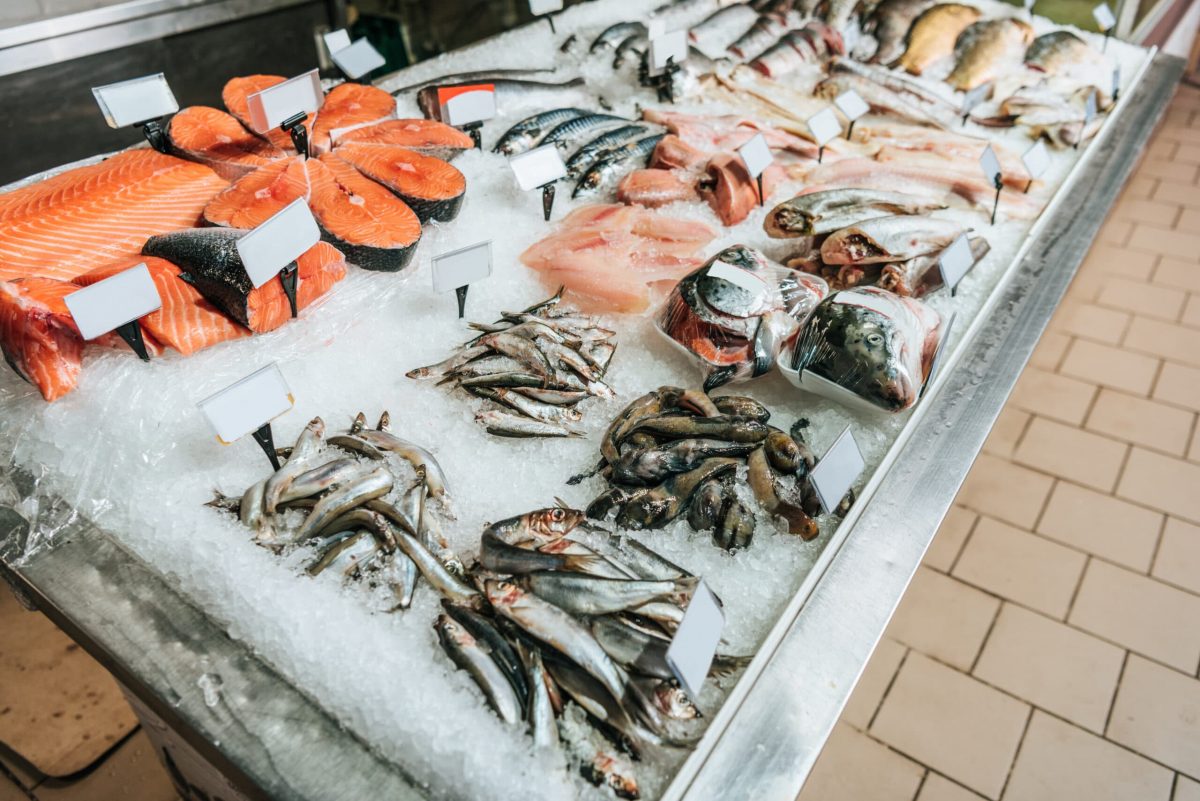Our food is so much more than a blend of calories, carbohydrates and protein. Our food is a powerful tool, one that must be both leveraged and cherished to ensure that our planet remains vibrant, biodiverse and habitable. Climate-conscious choices are critical, and our ocean ecosystems must be top of mind when determining what this new era of eating looks like.
Put into practice, this can be challenging. We can calculate (or at least give a very good guesstimate of) the carbon emissions associated with most foods in the grocery store, but seafood “scores” can vary dramatically. While on the whole, seafood’s carbon footprint is considered to be similar to poultry’s (relatively low on the animal-based scale), there are some critical outliers. For instance, global demand for shellfish, such as lobster and shrimp, has gone through a recent growth spurt, surprisingly pushing crustacean-based emissions into the most egregious zones, right on par with the biggest land-locked offenders: beef and lamb. In fact, shrimp and lobster make up 6% of global fishing catch but an outsized 22% of fisheries carbon emissions, further highlighting that not all seafood is environmentally equal.
Important Seafood Considerations
When considering the environment at the seafood counter, we must take into consideration the emissions produced by:
- The fuel used to power the ship that caught our seafood or the farm that raised it
- The fuel that transported it to us (this will be higher for imported foods)
- The fishing methods used, including the bycatch that took in place in the process
- Inputs from processing, packaging and (hopefully) recycling
- Refrigeration, storage, spoilage and waste which occurs during fishing, throughout manufacturing, at restaurants and in our own homes.
We must also consider the stress we are placing on wild populations and the marine ecosystems that depend on them, as well as the socioeconomic realities for the many people that worked to procure, process and prepare our food.
Making Informed Seafood Choices
There are some really great tools to help us measure our “foodprint.” These can be excellent ways to better understand how we are doing and where we can make some changes – in regards to both to seafood shopping habits and food choices across the board. The New York Times produced an interactive guide to more deeply understand the climate impacts of your food, as well as offer some suggestions. Seafood Watch’s Carbon Tool has a web and mobile-based app that allows for straightforward calculations and comparisons across seafood options. Foodprint.org also offers some great resources to refer back to at any point.
While every food has its own set of social and environmental implications, some are far more positive and should be embraced as much as possible. Clams, mussels and oysters, for example, are a class of aquatic mollusk called bivalves. These filter feeder organisms actually clean the waters around them and require practically no feed to produce, making them an excellent, high protein, low-carbon emissions option. Seaweed is another marine product that has recently been receiving more attention for it’s nutrition, ease of growth in some cases, and carbon sequestration capabilities. Both bivalves and seaweed/kelp show great promise as options to feed the complex demands of our growing global population and shifting climate.
Seafood Purchasing Guidelines
If you do choose to purchase seafood, here are some high-level guidelines to keep in mind:
- Buy as locally as possible. Avoid imported options as they have travelled the greatest distance and used fossil fuels to reach you. Plus, local options will support your local economy and likely be fresher!
- Certifications are your friend. MSC, ASC and BAP are highly vetted and trusted.
- Avoid buying species that we know are heavily overfished, such as bluefin tuna and chilean sea bass. Decreasing demand will help lessen the pressure they are facing in the wild. Greenpeace provides a list of the most overfished or otherwise unsustainable species to avoid.
- Farmed oysters, mussels & clams are great seafood options. Wild-caught options are trickier to monitor and some bivalves can be invasive species, so stick with farm-raised and native bivalve species if you can.
- Ask questions about where the fish came from, how it was procured, etc. The more you know, the better. Next time you order seafood, ask your waiter about sourcing. If they don’t know the answer, at least they know their customers are curious!
- Try plant- and cell-based seafood options as they become more readily available. There are many environmental and social benefits to these exciting, innovative new products.
Let’s Vote with Our Wallets & Forks
We must demand a dramatic, worldwide reimagining of our foodscape requiring unprecedented leadership from corporate, political and scientific leaders. What better way to insist on that transformation than with our wallets and forks? Money speaks and we can give it a massive megaphone every time we stock our pantry or place a takeout order.
Every effort we make to reduce our environmental impact matters. Making a few simple swaps each week by opting for plant-centric options, local goods or sustainably-sourced seafood has huge implications for our global food and economic systems that will continue to amplify over time. Any change is worth celebrating and we absolutely can, and should, re-envision our global food landscape to be one that is nourishing, regenerative and worthy of the incredible planet we call home.
